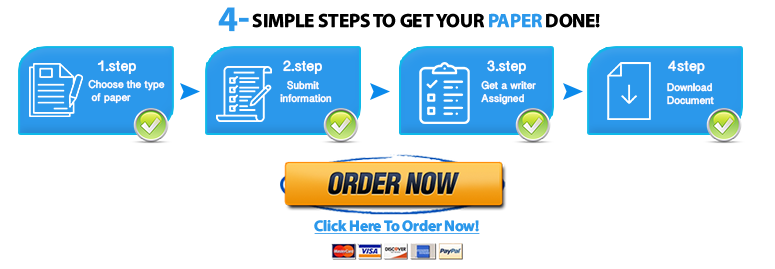The Trans Pacific Partnership (TPP) Is Dead: Long Live the CPTPP!
634 Part 7 Cases
of information and communication technology to some
other TPP countries.
Some U.S. companies urged Congress to vote against
the deal. Ford opposed the deal because it would phase
out a 2.5 percent tariff on imports of Japanese cars into
the United States and a 25 percent tariff on imports of
light trucks—even though under the agreement, those
tariffs would be phased down over 30 years. Labor
unions opposed the deal, arguing that it would result
in further losses of U.S. manufacturing jobs and lead
to lower wages. The tobacco company Philip Morris
opposed the deal because it would prevent tobacco companies from suing foreign governments over antismoking
measures that restrict tobacco companies from using
their logos and brands to market tobacco products. Several big drug companies also opposed the deal because it
only protected new biotechnology products from generic
competition for 5 years,
rather than the 12 years
they had before.
Data supporting these
various claims and counterclaims were offered by a
number of independent
studies, including those
from the World Bank, the
Institute of International
Economics (IIE), and Tufts
University. Both the World
Bank and the IIE concluded that by creating
more overseas demand for
American goods and services, by 2030 the TPP would raise U.S. wages slightly
above what they would have been without the deal. The
IIE study estimated that the TPP would increase annual
U.S. exports by $357 billion, or 9 percent, by 2030. The
IIE study also calculated that overall, there would be no job
losses in the United States. Although some sectors would
see job losses, the IIE suggested that these would be offset
by job gains elsewhere. The study from Tufts University
was the most pessimistic, estimating that the deal would
result in the loss of 450,000 jobs in the United States over
10 years. To put this in context, between 2010 and 2015, the
U.S. economy created 13 million new jobs, so the worstcase estimate of losses amounted to no more than two
months of job growth during the 2010–2015 period.
Just three days into his administration, President
Donald Trump withdrew the United States from the TPP,
calling it a “ridiculous trade deal.” Many predicted that
without the United States, the deal would quickly collapse—
but that did not happen. Instead, led by Japan, the
On February 4, 2016, ministers from 12 governments
signed off on the Trans Pacific Partnership (TPP), a free
trade deal among 12 countries, including the United
States, Japan, Australia, New Zealand, Chile, Canada,
Mexico, and Vietnam. China was not part of the deal.
Together, these countries accounted for 36 percent of the
world’s GDP and 26 percent of world trade. In the United
States, critics of the deal were quick to register their
opposition. Donald Trump, now president of the United
States, said that the “TPP is a terrible deal.” Bernie Sanders,
one of the leading Democratic contenders, called it
“disastrous” and “a victory for Wall Street and other big
corporations.” Many other politicians, wary of the fact
that 2016 was a general election year in the United States,
were also quick to criticize the deal. In contrast, the
administration of Barack Obama heralded the TPP as a
historic deal of major importance. Editorials in influential publications such as The
Wall Street Journal and The
Economist urged the U.S.
Congress to ratify the deal.
The TPP planned to
eliminate or reduce about
18,000 tariffs, taxes, and
nontariff barriers such as
quotas on trade between
and among the member
countries. By expanding
market access and lowering
prices for consumers, economists claimed that the deal
would boost economic
growth rates among TPP
countries and add about $285 billion to global GDP by
- Because the United States already has very low tariff barriers, most of the tariff reductions would occur in
other countries.
U.S. agriculture would have been a big beneficiary.
The TPP would eliminate import tariffs as high as 40 percent on U.S. poultry products and fruit and 35 percent on
soybeans—all products where the United States has a
comparative advantage in production. Cargill Inc., a giant
U.S. grain exporter and meat producer, urged lawmakers
to support the pact. A number of large, efficient U.S.
manufacturers also came out in support of the deal,
which would eliminate import tariffs as high as 59 percent on U.S. machinery exports to TPP countries. Boeing,
the country’s largest exporter, said that the deal would
help it compete overseas, where it gets 70 percent of its
revenue. Several technology companies, including Intel,
voiced support for the deal, pointing out that it would
eliminate import taxes as high as 35 percent on the sale
The Trans Pacific Partnership (TPP) Is Dead: Long Live the CPTPP!
Shuttestock/creativetan
Cases 635
“Fact Checking the Campaigns for and against the TPP Trade
Deal,” The Washington Post, February 11, 2016; Tripp Mickle and
Theo Francis, “Trade Pact Sealed,” The Wall Street Journal,
October 6, 2015; Peter Petri, and Michael Plummer, “The
Economic Effects of the Trans Pacific Partnership: New
Estimates,” Peterson Institute for International Economics, working paper 16-2, January 1, 2016; “China Picks Up the U.S. Trade
Fumble,” The Wall Street Journal, November 17, 2016; “The New
TPP Trade Deal: Going Ahead without Trump,” Aljazeera News,
March 24, 2018; and “Japan Approves Bill to Ratify Successor to
TPP Free Trade Pact,” Japan Times, March 24, 2018.
Case Discussion Questions - What were the proposed benefits of the TPP?
- What were the potential drawbacks of the U.S.
entering the TPP? What would be the drawbacks
to other nations? - Why do you think Donald Trump was so adamantly
opposed to the TPP? - Why do you think the 11 remaining signatories went
ahead with a revised deal after the United States
withdrew? - Is the CPTTP a threat to American economic
interests? - What is the opportunity cost to the United States
of withdrawing from the TPP? - If you were in a position to advise Donald Trump
regarding future American relations with the
CPTPP, what would you tell him?
remaining 11 nations pressed ahead with a revamped
deal. Renamed the Comprehensive and Progressive Trans
Pacific Partnership (CPTPP)—or TPP for short—the deal
signed in Chile on March 8, 2018, will dramatically lower
tariffs and other trade barriers between the 11 nations.
The revised agreement, which still excludes China, covers
500 million people in nations that produce more than
13 percent of global gross domestic product.
According to David Parker, New Zealand’s Trade
Minister: “I think this agreement serves as an antidote to
the protectionist trend we’re seeing in the world. I think
the CPTPP is more important than it was a year ago. This
rise of protectionism is worrisome. . . . Countries that are
in the agreement have got a different route where they can
club together in a friendly manner, and facilitate the growth
of their own economies for the benefit of their people.”2
Although the United States is no longer party to this
deal, several leaders of the signatory nations have indicated that they would welcome the U.S. back into the
fold, although this seems unlikely to happen so long as
Donald Trump is president. There are also indications
that a post-Brexit Britain might seek to join the CPTPP.
Sources
Caitlin McGee, “Controversial TPP Pact Signed amid New
Zealand Protests,” Aljazeera, February 4, 2016; Catherine Ho,
2
”The New TPP Trade Deal: Going Ahead without Trump.” Al Jazeera
News, March 24, 2018. https://www.aljazeera.com/programmes/
talktojazeera/2018/03/tpp-trade-deal-trump-180323073314104.html.


